Archaeobotanical investigations on the landscape and vegetation history of the Late Bronze Age fortification Corneşti-Iarcuri and its environs in the Romanian Banat
2015-2019
The research objective of the archaeobotanical sub-project was to investigate vegetation and landscape changes in the vicinity of Europe's largest known Late Bronze Age settlement Corneşti-Iarcuri in the Romanian Banat, accompanied by systematic analyses of macro-remains from excavation sites in order to clarify the use of plant resources.
The identification of polliniferous archives turned out to be difficult due to the small number of floodplain areas still inundated today, the extensive mineralisation of organic material under wet/dry conditions and predominantly alkaline soils. Three cores from the palaeofloodplains of the Apa Mare (at Vinga) and Bega rivers (at Şustra) showed pollen preservation, together with some colluvia within the fortification of Corneşti-Iarcuri (Figs. 1, 2, and 6). The colluvia were also analysed sedimentologically and pedologically in order to characterise anthropogenic geomorphodynamics, especially since fossil topsoils could be used to distinguish between phases of erosion and stability. Analyses of macro-remains from five excavations dealt with charred, but also mineralised remains of cultivated and wild plants in various find contexts from the Bronze Age as well as Copper and Iron Age structures.
 |
|
Fig. 1: Coring sites and areas with pollen-bearing profiles |
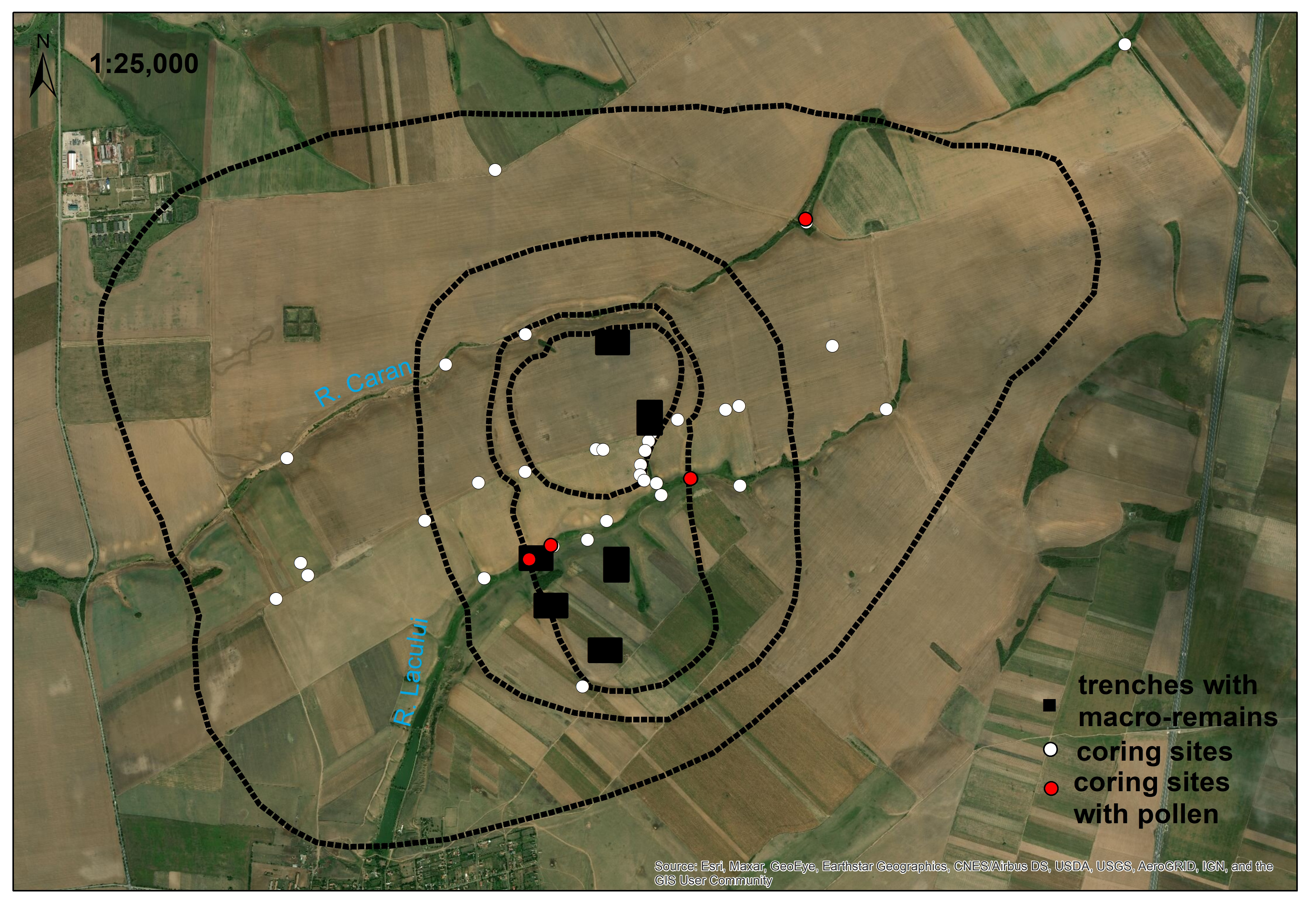 |
|
Fig. 2: Coring and excavation sites in Corneşti-Iarcuri |
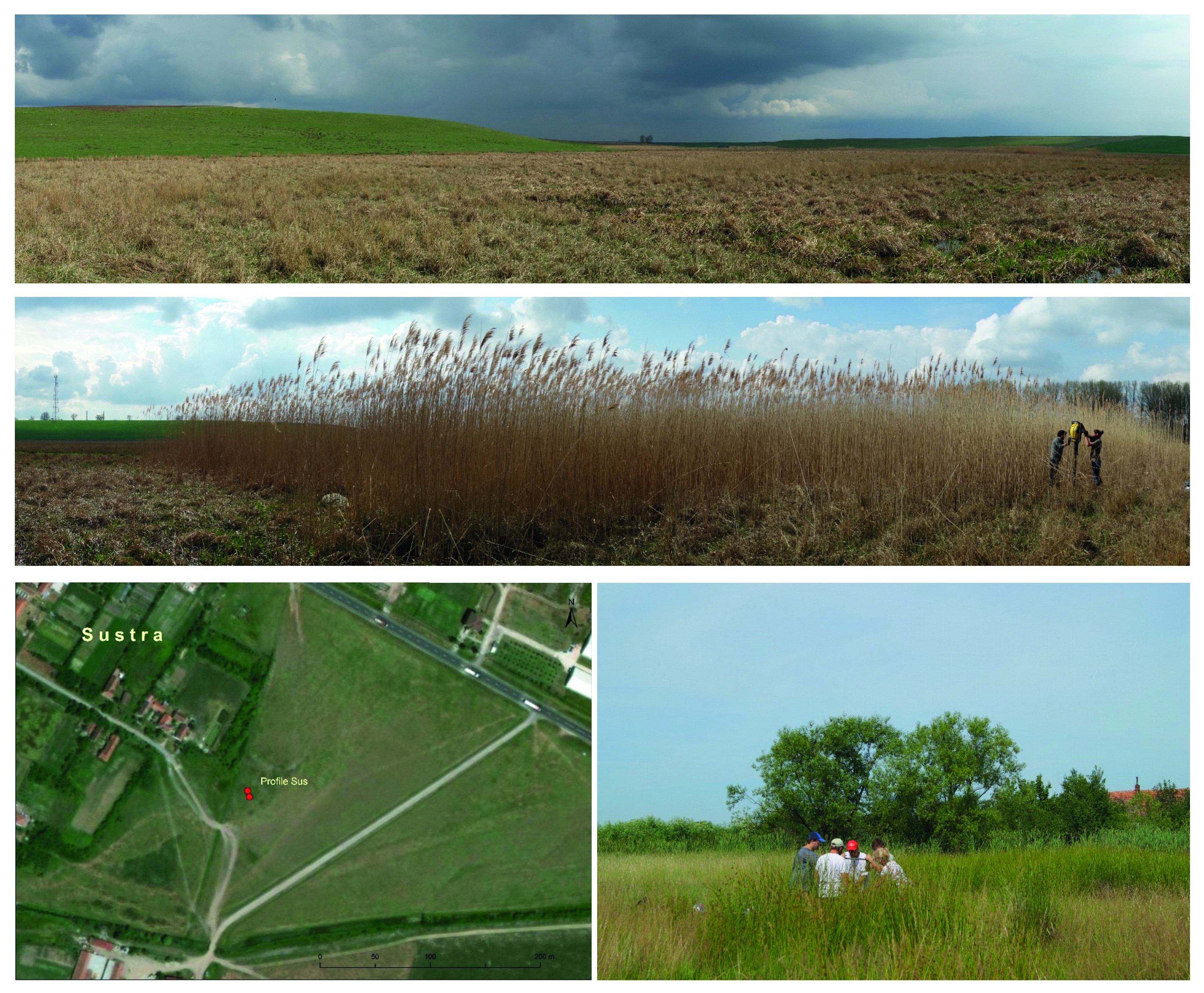 |
|
Fig. 3: Views of the analysed off-site locations (top: former lake area at Vinga, centre: site Vin, bottom: coring at Şustra) |
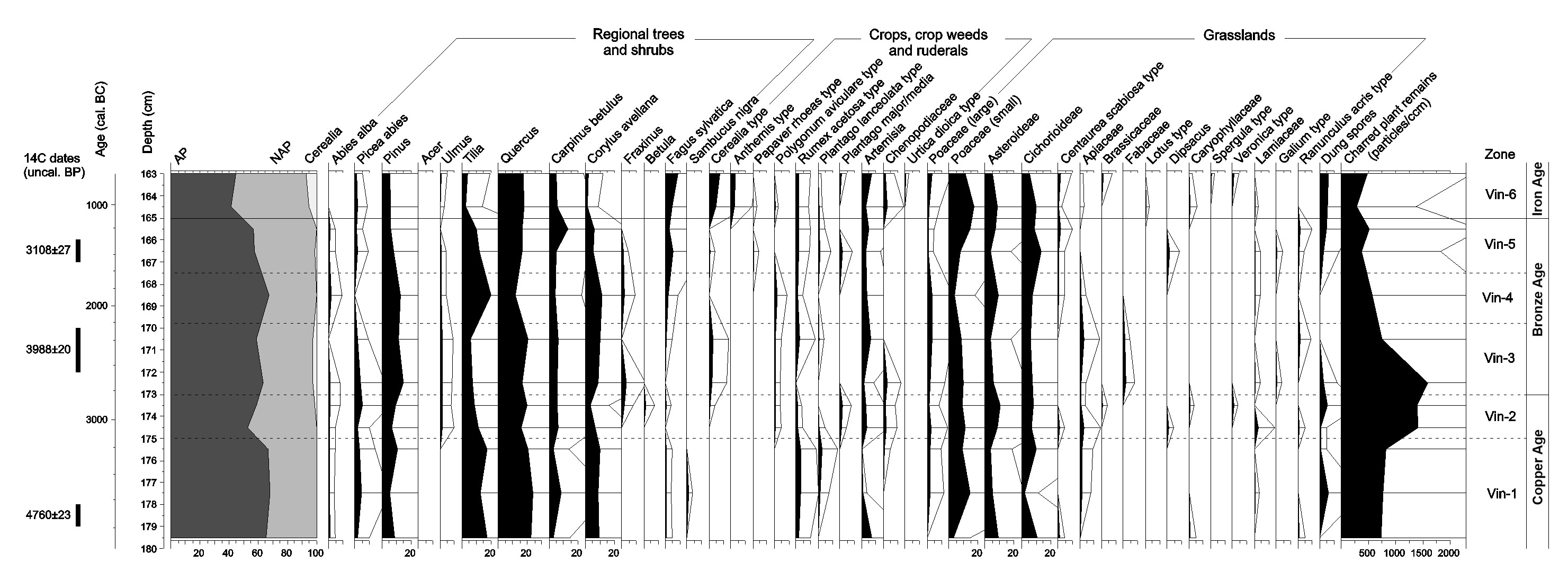 |
|
Fig. 4.1: Regional pollen diagram of off-site profile Vin |
 |
|
Fig. 4.2: Local pollen diagram of off-site profile Vin |
 |
|
Fig. 5.1: Regional pollen diagram of off-site profile Sus |
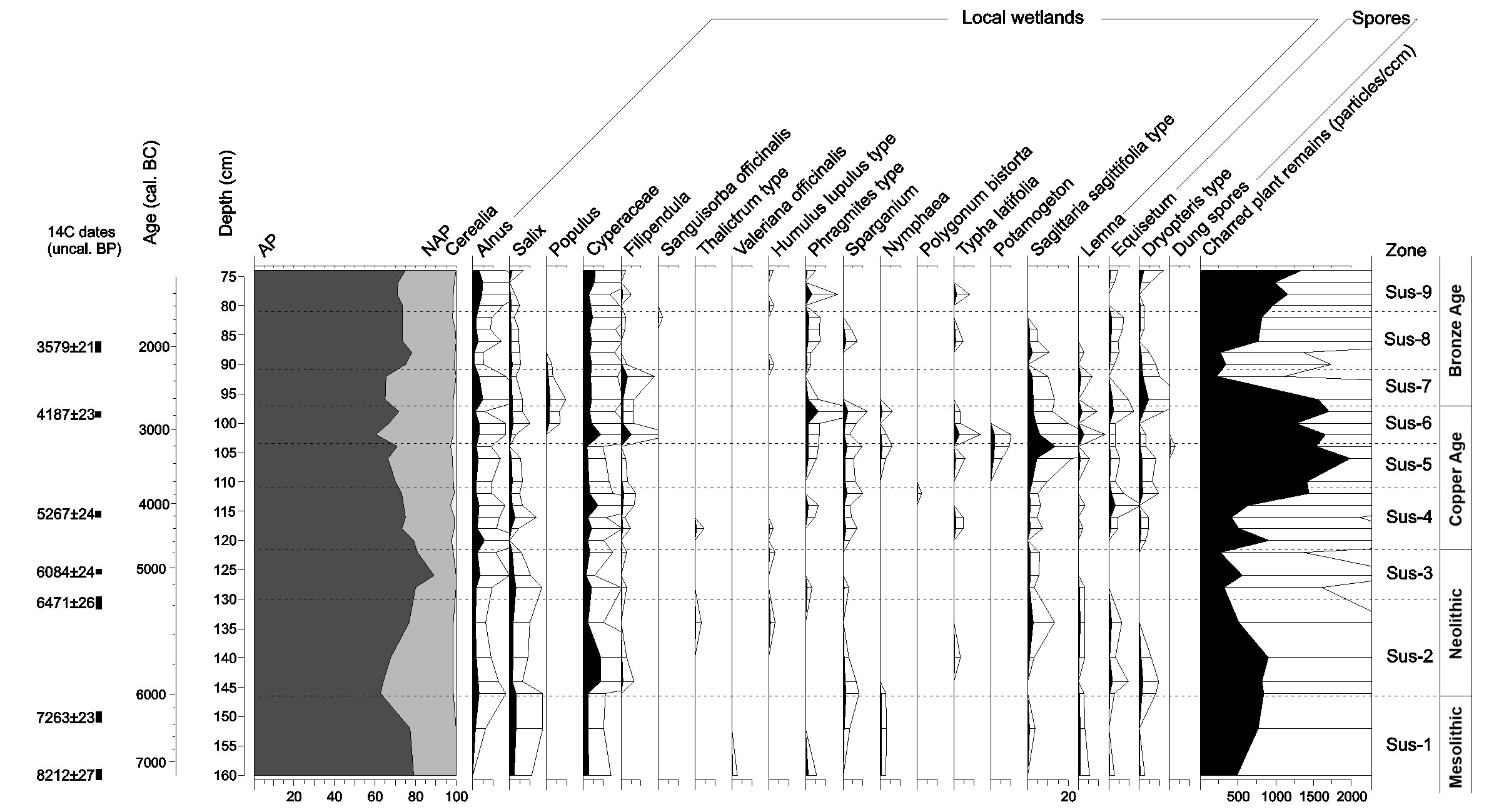 |
|
Fig. 5.2: Local pollen diagram of off-site profile Sus |
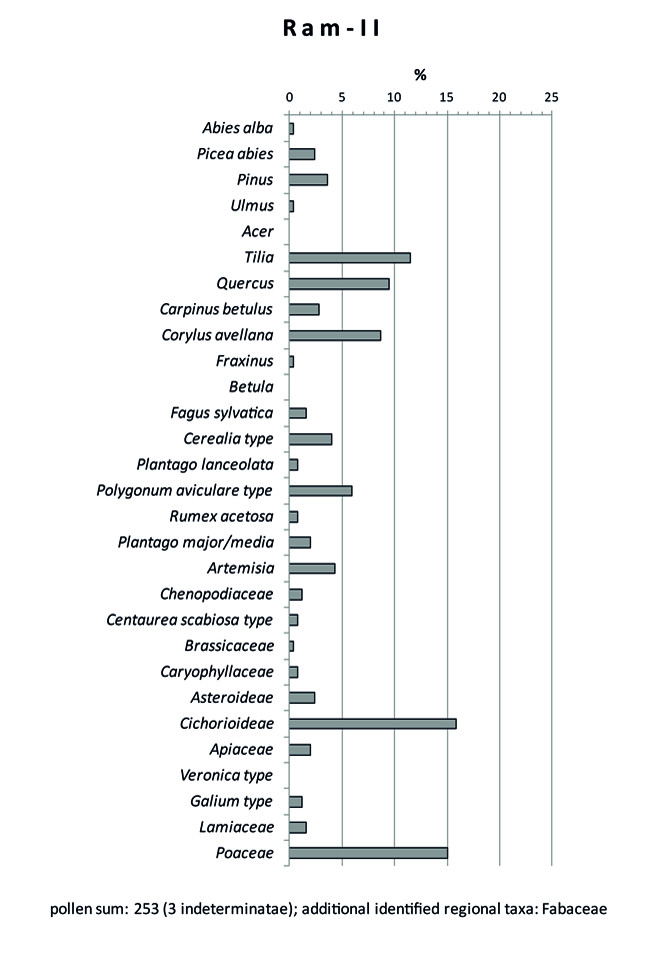 |
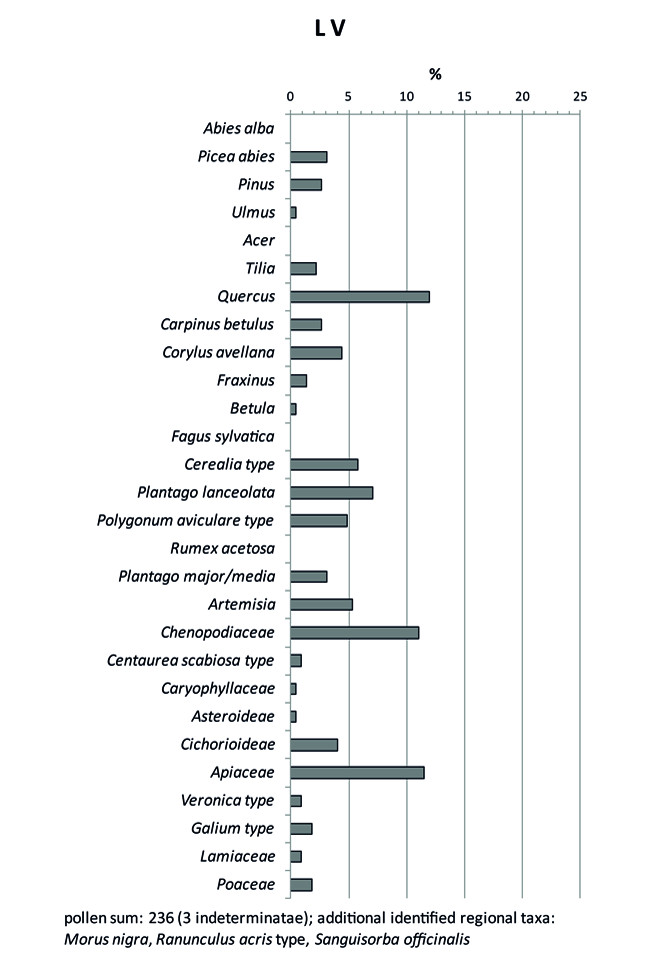 |
|
Fig. 6.1: Pollen contents of on-site core Ram-II |
Fig. 6.2: Pollen contents of on-site core LV (Iron Age) |
The pollen spectra of the off- and on-site archives (Fig. 4 - 6) and the analysis of prehistoric erosion/deposition and plant macro-remains in the settlement area resulted in the following differentiated picture of the human-environment relationships around Corneşti-Iarcuri:
Since the Early Neolithic (approx. 6000 cal. BC) man has evidently influenced the natural vegetation, which consisted of open mixed woodlands dominated by Tilia. The Late Copper Age (approx. 3000 cal. BC) proved to be the period of the most distinct anthropogenic changes. This is reflected by the thick colluvia in the valleys of Corneşti and a significant decrease in tree pollen both in the local and regional archives in combination with marked charcoal peaks. The macro-remains from this period are characterized by high percentages of feather grass awns, which attest that extensive grazing took place in an open vegetation, while the prominent crops were emmer and einkorn. Apparently, occasional torrential rains in the context of a wet cool climate, together with disturbances of the vegetation cover, led to the documented severe soil erosion. This phase of activity was followed by a period of reduced land use pressure, especially in the Middle Bronze Age, which is also visible in the pollen composition of the off-site profiles, with tree pollen increasing again and anthropogenic indicators decreasing.
The Late Bronze Age, which is the focus of the archaeological investigations, was characterised by a climatic change towards more arid conditions, resulting in a lack of sediments and predominance of hiatuses in the study area during that time. Archaeobotanical on-site investigations show that, in addition to the high population pressure evident from archaeological research, there was also intensive grazing, leading to the disappearance of Stipa. Nevertheless, the lack of colluvia within the fortified settlement shows that the slope sediments were much more stable than in the Copper Age. The range of crops is clearly diversified, and apart from emmer, einkorn, hulled barley, spelt and bread wheat, millet were gaining in importance (Fig. 7). On the one hand, it is resistant to drought, but could reflect cultural and historical changes as well. Inside the fortification, the proportions of millet finds varied between the individual settlements, which may indicate an underlying social differentiation. In the Iron Age, more new crops such as flax and opium poppies appeared, and both linear and extensive erosion set in again. The tree population had dropped to a minimum, and the proportions of cultural indicators were similar to those of the modern spectrum. Archaeozoological studies show that, like in the Copper Age, cattle dominated again, in contrast to the Late Bronze Age, when the number of sheep/goats was greatly increased.
 |
Fig. 7.1: Crop spectrum of Late Bronze Age samples in Corneşti-Iarcuri |
 |
| Fig. 7.2: Crop ubiquity (in %) in Late Bronze Age samples in Corneşti-Iarcuri |



